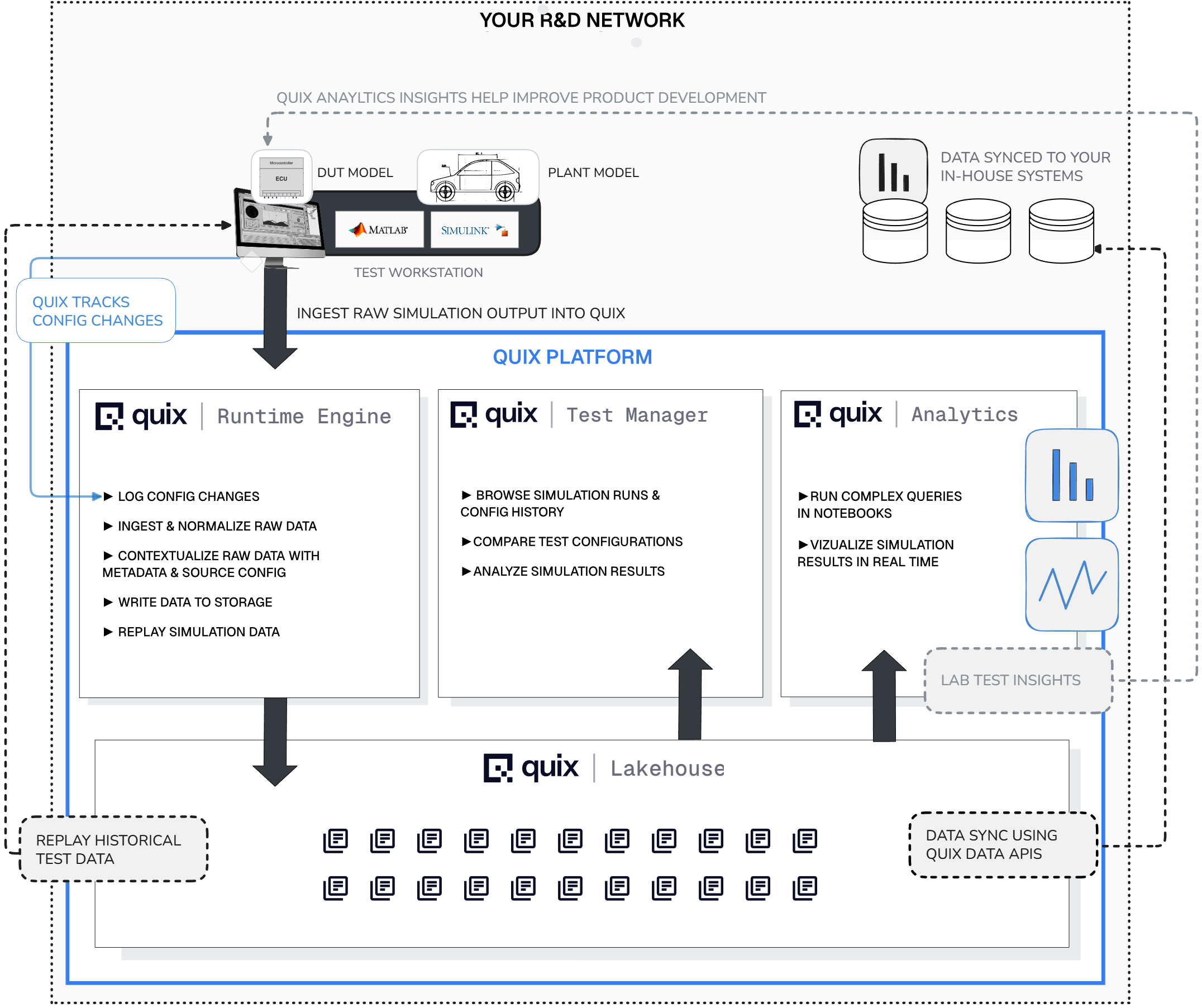What can you build with Quix?
Parallel model testing
Use Quix to execute containerized model binaries (FMUs, Simulink-generated code, or Python models) in parallel across managed compute nodes.
Automated post-processing and normalization
Stream simulation results directly into Quix, where data is automatically timestamped, cleaned, and enriched with configuration context — ready for analysis as soon as each run completes.
Analytics notebooks and dashboards
Use in-built Grafana Dashboards to vizualize simulation results in real time or compare previous test campaigns using SQL or Python with analytics notebooks.
Test campaign tracking and versioning
Automatically record every simulation run with its parameter set, model version, and configuration data. Browse or compare historical campaigns to understand which parameter changes produced which outcomes.
Cost efficient data storage
Use the Lakehouse paradigm to store data in a variety of formats and resolutions without sacrificing accessibility or IT budgets.
.svg)










